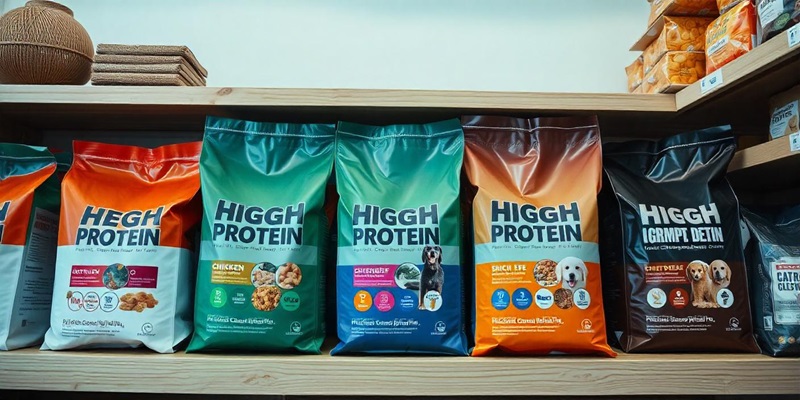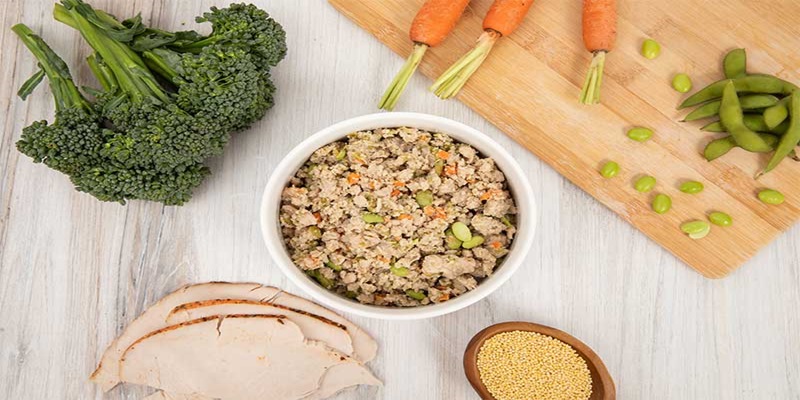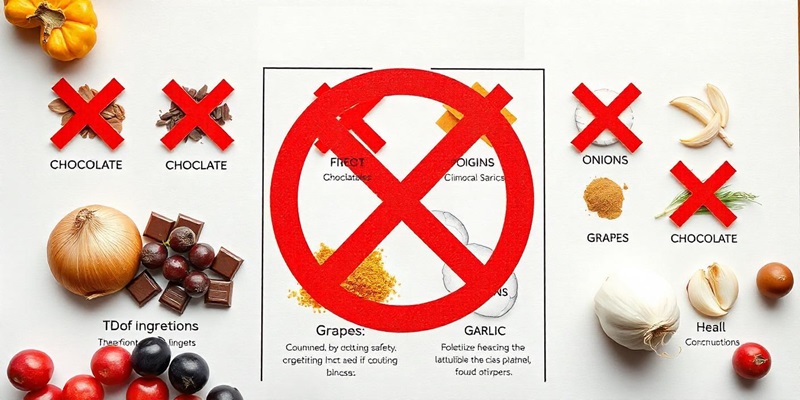Pet Nutrition 101: What Ingredients to Look For in Food Labels
Being a good pet parent means giving your animal friend top-notch grub. But getting your head around pet chow tags is like trying to sort out a big ol' puzzle of weird ingredients and flashy sales talk. You're left scratching your head, thinking which munch will make your pet thrive and stay healthy over time. It's essential to get the lowdown on how to decode those labels. Following up, you'll discover the critical stuff that makes up the food, spot the primo stuff, and steer clear of the nasty junk. Once you've got the down-low, picking out the super eats for your little bud's own thing will be a breeze.
The Big Deal about Checking Out Pet Food Tags
Getting the Scoop on What Your Pet's Got to Have Nutrition-wise
Taking good care of your pet is essential in keeping them healthy and happy. Choosing the proper chow for your furball is a big deal. You've got to read those pet food labels; it's not just advice; it's vital and influences how extraordinary your buddy's life is.
What's on the pet food labels is super helpful. It tells you the nutrition, what is in there, and if it's top-notch. By checking out these labels, you decide what your pet munches on with all the facts in hand.
Breaking Down the Label: The Must-Sees
When you're looking at a pet food label, you better keep an eye on these crucial bits:
1. Check the ingredients first: Quality protein sources should take the top spot.
2. This analysis is a must-see: It shows the crucial nutrient percentages.
3. Look for the "AAFCO" seal: It confirms the food meets nutritional needs.
4. Use these feeding tips: They guide you on how much to feed your pet.
Knowing these parts will help you pick options that are best for your pet's prime health and longer life. Remember, taking time to learn about what's in pet food is like putting money away for your pal's well-being in the long run.
Top Protein Picks in Pet Food

When peeking at pet food labels, spotting top-notch protein is vital to your pet's health and happiness. Proteins matter a lot. They build muscles, fix tissues, and keep your pet alive.
Proteins from Animals
Ensure the first item listed on nutritional labels is a specific type of animal protein. Search for:
Chicken
Beef
Lamb
Fish
Think salmon or whitefish, for instance.
These specific proteins are more straightforward to digest and offer a full range of amino acids. Stay away from vague descriptions like "meat meal" or "animal by-products." They could be better quality and might include parts of animals you'd instead not think about.
Proteins from Plants
Although your furry friend should chow down on meat, a few top-notch plant proteins can add a little extra to their bowl:
Peas
Lentils
Chickpeas
These are only some gigs, but they can spruce up your pet's grub.
These components provide extra protein and fibre. However, cats, as obligate carnivores, should not rely on them as their primary protein.
Protein Quality Signs
Keep an eye out for words that point to better protein:
1. "Whole" or "deboned" meats.
2. "Meal" from certain animals, like "chicken meal."
3. Liver or heart and other organ meats.
Involving these in your fur buddy's diet means they get all the essential nutrients they need to be super healthy. Remember, where stuff is listed on the ingredients label matters a lot – you want those protein bits up front for a chock-full diet.
Good Fats and Carb Choices

Essential Fatty Acids
When checking out what's in your pet's food, hunt for the good fats packed with omega-3 and omega-6. These fatty acids are super important for keeping your pet feeling great. Look for fish oil, flaxseed, and chicken fat because they give your pet these nutrients. They help make their skin and fur look good, calm swelling, and keep their brains sharp.
Quality Carbs
Even though cats and dogs need meat, the right carbs can give them energy and help with their bathroom issues. Look for complex carbs like sweet potatoes, peas, and brown rice. They don't just provide a quick energy boost; they ensure your pet's energy levels stay steady and make their tummy work well.
Balancing Act
Finding the best nutrition for your pet involves getting the perfect mix of proteins, fats, and carbs. Make sure the first thing on the food's ingredient list is a specific animal protein, followed by good fats and complex carbs. This ensures your pet gets a balanced diet that gives them energy, helps them keep a healthy weight, and boosts their health.
Food Ingredients to Avoid

Knowing which ingredients could be harmful to your pet is crucial when examining pet food. With the correct information, you can choose better food for your pet's health.
Fake Stuff to Keep Food Fresh and Colorful
Avoid pet chow that packs in fake preservatives like BHA, BHT, and ethoxyquin. Research connects these additives to various health troubles in our furry pals. And those counterfeit colors Red 40, Blue 2, Yellow 5? They're just fluff, not good for nutrition, and sometimes, they even stir up allergies or get some pets too jumpy.
By-products and Fillers
Don't go for grub that lists vague "meat by-products" or "animal digest" on the ingredient sheet. These bits often come from lower-quality animal sources and need to hit the mark on nutrition. Also, keep your eyes peeled for fillers like corn gluten meal, wheat gluten, or soy protein, as these can be tough on a pet's tummy and might set off allergies.
Sweeteners and Excessive Salt
Artificial sweeteners like xylitol can make pets sick, and too much sugar causes weight gain and teeth issues. Too much salt can also dehydrate pets and mess up their electrolytes if they're old or already unwell.
Preservatives That Make People Argue
Watch out for food with preservatives that some folks argue about, like propylene glycol or sodium nitrite. They're okay to use, but some pet parents stay away from them, thinking they might be destructive over time.
How to Choose the Best Food for Your Pet?
Figure Out What Nutrients Your Pet Needs
When choosing the best chow, start by evaluating your pet's unique dietary needs. Elements like age, breed, size, and how much they move matter a ton in picking the right food. Young pets like puppies and kittens need heaps of calories and protein for growing, but older pets might need food that's lower in calories and helps their joints.
Know What's in the Bag
Peeking at pet food labels is crucial to making intelligent choices. Look for products with chicken, beef, or fish as the top ingredient—that means it's a solid protein source. Avoid chow with iffy ingredients like "meat by-products" or fillers such as corn and wheat gluten.
Pay Attention to Special Diets
When picking out food for your critter, consider any necessary items.
Scrutinizing pet food labels is essential to make informed choices. Look for products with a high-quality protein source, like chicken, beef, or fish, at the top of the ingredient list. Dodge foods with vague terms such as "meat by-products" or too many fillers like corn and wheat gluten.
Considering your pet's unique eating habits when you're on the hunt for the perfect grub is a smart move. Age, breed, size, and how much they wiggle around are super important for deciding on the right munch. Little guys like puppies and kittens need extra protein and calories because they're growing like weeds, but the old-timers can do with fewer calories and stuff that's kind to their joints.
Choosing Wisely: Essential Ingredients for Optimal Pet Nutrition
To be a savvy pet parent, you must scrutinize what's in the show, ensuring your animal pal gets top-notch grub. Focus on top-tier proteins, steer clear of fake stuff, and get the lowdown on essential nutrients. Doing that, you'll be golden in picking what goes in your pet's bowl.
Related Posts
- Eco-Friendly Pet Care: Sustainable Choices for Pet Owners
- The Truth About Grain-Free Pet Food: Is It Right For Your Dog?
- 6 Effective Home Remedies To Stop Dogs From Licking Paws
- How To Build A Pet-Friendly Garden: Safe Plants And Features For Pets
- Pet Photography Tips: How To Capture The Perfect Shot Of Your Pet
- Pet Allergies: How To Live Comfortably With Pets When You Have Allergies